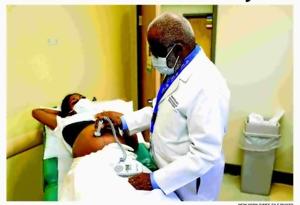As open enrollment season approaches, individuals and families should prepare for significant increases in health care costs in 2024. A recent survey conducted by Mercer, a leading benefits consultant, indicates that employers are facing an average increase in health care costs of almost 9%, the highest in over a decade. Some companies are even projecting double-digit hikes, despite efforts to manage expenses.
The primary drivers of these increases include higher wages for health care workers, escalating charges from medical professionals, and rising demand for expensive new treatments, such as those for weight loss. As a result, employees can anticipate sharing a portion of this financial burden through increased premiums and out-of-pocket expenses.
According to Cynthia Cox, a health insurance expert at KFF, the extent to which employers will pass on these costs to employees remains uncertain. Larger organizations may be better positioned to absorb some of the increases, whereas smaller firms might have limited options. With costs on the rise, it is crucial for workers to assess the plans available during their employer’s open enrollment period, which typically occurs in the fall.
Louise Norris, a health policy analyst at Healthinsurance.org, emphasizes the importance of actively evaluating coverage options. “Inertia is a powerful force,” she notes, urging individuals to ensure that their preferred doctors and pharmacies are still included in their plans and that necessary medications remain on the formulary.
Employers may offer plans with lower monthly premiums, often linked to higher deductibles—the amount individuals must pay before insurance coverage kicks in—or increased copayments at the point of care. High-deductible plans often come with contributions to a Health Savings Account (HSA), which could amount to around $1,000. These accounts allow individuals to save for out-of-pocket expenses and can be carried over if they change jobs.
When considering a high-deductible plan, it is essential to assess family health needs carefully. The minimum annual deductible for family coverage in an HSA-eligible plan is set at $3,400 for 2026. This means individuals would need to cover the full cost of care—aside from preventive services—until they reach this threshold.
Cox warns of the potential pitfalls of choosing a high-deductible plan without adequate savings. “If you pick a high-deductible plan, make sure you have enough savings in the bank,” she advises. Norris also suggests calculating possible expenses in a worst-case scenario, where individuals might face a lengthy hospital stay or a serious diagnosis, leading to substantial bills.
Health plans typically cover only 80% of costs after the deductible is met, covering 100% only after reaching the plan’s out-of-pocket maximum. As employees navigate these complex decisions during open enrollment, understanding the implications of cost-sharing will be essential for their financial well-being in the upcoming year.





































































